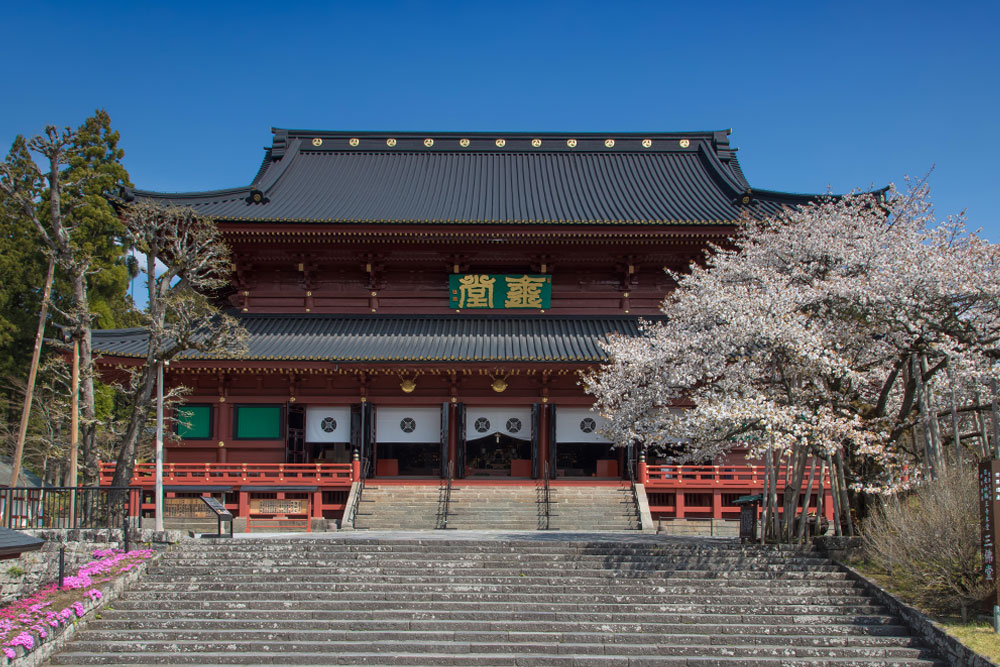Overview
Rinnoji Temple stands as a crown jewel of Buddhist culture in Tochigi Prefecture’s Nikko, a site of immense historical and spiritual significance. Founded in the 8th century by the legendary monk Shodo Shonin, this temple is far more than a religious site—it’s a profound journey through Japanese Buddhist art, history, and tradition.
Quick Essential Information
- Location: Nikko, Tochigi Prefecture, Japan
- Founded: 8th Century
- Significance: Nikko’s Most Important Buddhist Temple
- Must-See Attractions:
- Sanbutsudo Hall
- Treasure House
- Shoyoen Garden
- Recommended Visit: Year-round, peak in November during maple season
- Admission Prices:
- Sanbutsudo Hall: 400 Yen
- Sanbutsudo Hall + Taiyuin: 900 Yen
- Treasure House and Shoyoen Garden: 300 Yen
Historical Background
The story of Rinnoji Temple begins in the 8th century with Shodo Shonin, the pioneering monk who introduced Buddhism to the Nikko region. More than just establishing a temple, he laid the foundational spiritual infrastructure for Buddhist practice in this sacred landscape. Through centuries of development and careful restoration—with the most recent major renovation completed in spring 2019—Rinnoji has preserved its cultural and spiritual essence.
Key Attractions Explored
Sanbutsudo Hall
The architectural and spiritual centerpiece of Rinnoji, the Sanbutsudo Hall houses three magnificent gold-lacquered wooden statues: Amida Buddha, Senju-Kannon (Thousand-Armed Kannon), and Bato-Kannon (Horse-Headed Kannon). These statues symbolically represent the three mountain deities of the Nikko region, showcasing a unique fusion of Buddhist philosophy and indigenous mountain worship. The intricate craftsmanship and golden brilliance captivate visitors from around the globe.
Treasure House
A repository of Buddhist artifacts and Tokugawa period relics, the Treasure House offers an unparalleled glimpse into Japan’s rich religious and historical narrative. Each exhibit tells a story, bridging the past with the present and providing visitors with deep insights into the cultural complexity of Japanese Buddhism.
Shoyoen Garden
Located behind the Treasure House, Shoyoen is a meticulously designed Japanese garden that becomes a photographer’s paradise during autumn. Maple trees elegantly frame the central pond, creating a stunning landscape that peaks in the first half of November. It’s a serene location that beautifully demonstrates the Japanese aesthetic of harmony between human design and natural beauty.
Best Times to Visit
Rinnoji welcomes visitors year-round, but these periods offer exceptional experiences:
- Spring: Cherry blossom season
- Autumn (first half of November): Maple leaf viewing
- Summer: Avoid peak tourist season and extreme heat
Transportation Guide
How to Reach
- Walking from Tobu and JR Nikko Stations: 30-40 minutes
- Bus Ride: Approximately 10 minutes
- Bus Ticket Prices:
- One-way: 350 Yen
- Day Pass: 600 Yen
- Nikko Passes are accepted
Opening Hours and Admission
- Operating Hours:
- April-October: 8:00 AM – 5:00 PM
- November-March: 8:00 AM – 4:00 PM
- Ticket Prices:
- Sanbutsudo Hall: 400 Yen
- Sanbutsudo Hall + Taiyuin: 900 Yen
- Treasure House and Shoyoen Garden: 300 Yen
- Note: Admission closes 30 minutes before closing time
Visitor Tips
- Dress respectfully for a religious site
- Allow 2-3 hours for a comprehensive visit
- Follow photography guidelines
- Dress warmly during winter months
- Consider purchasing combined tickets for savings
Official Website
Conclusion
Rinnoji Temple is more than a destination—it’s a portal to Japan’s profound spiritual and cultural landscape. From the golden splendor of the Sanbutsudo Hall to the poetic beauty of Shoyoen Garden, every corner resonates with centuries of tradition and contemplation. Whether you’re a history enthusiast, cultural explorer, or nature photographer, Rinnoji promises an transformative experience that transcends ordinary travel.

Leave a Reply